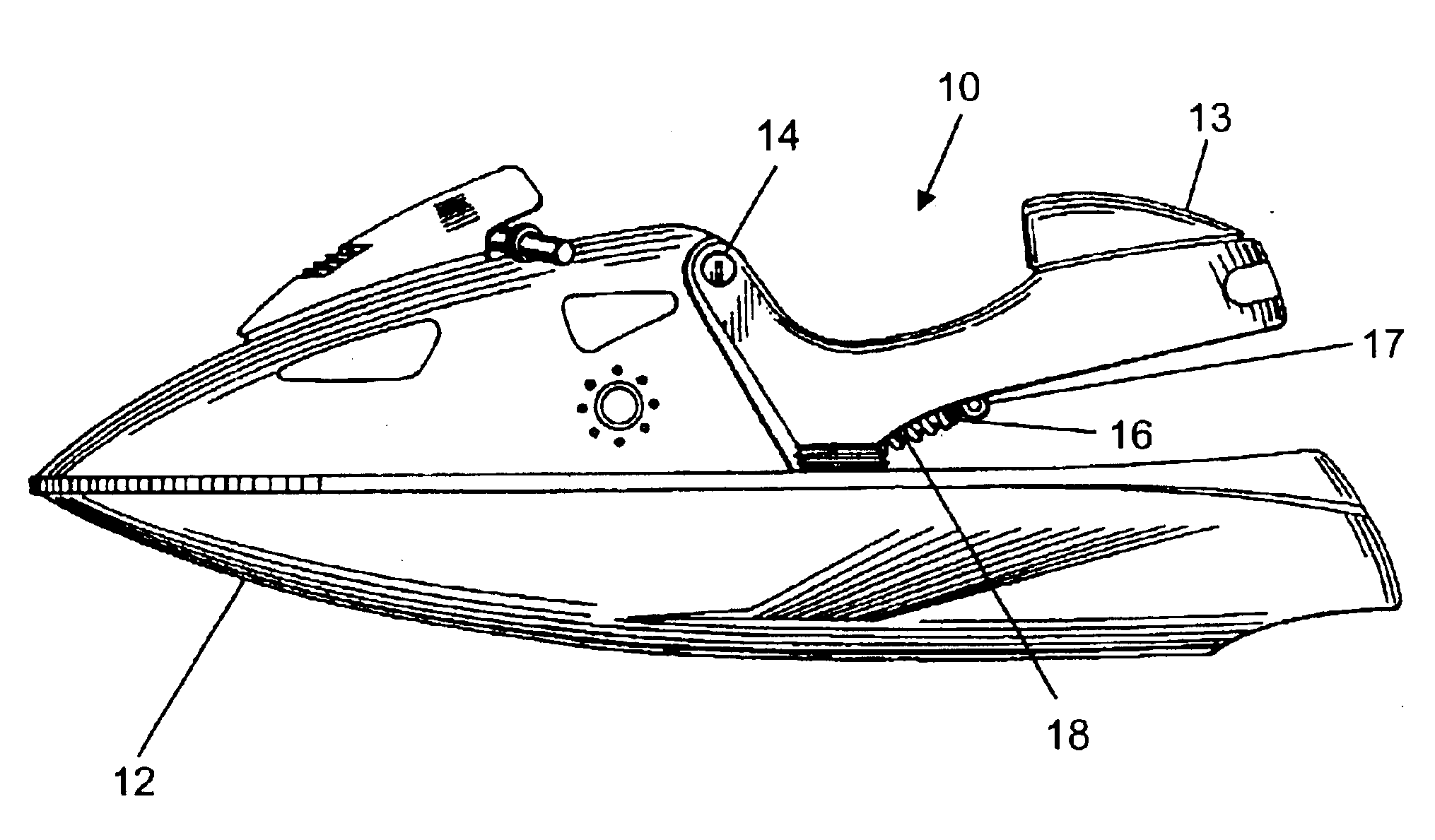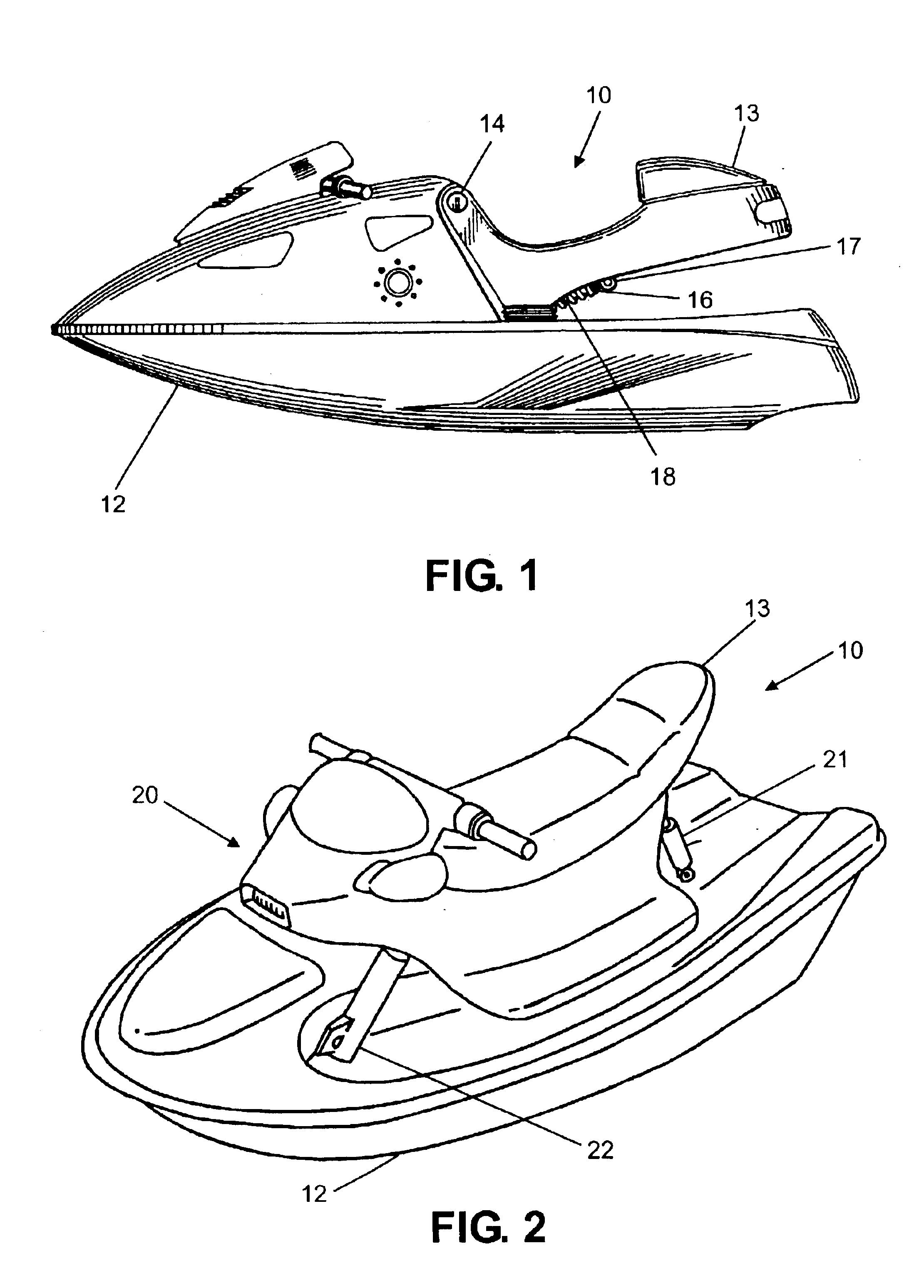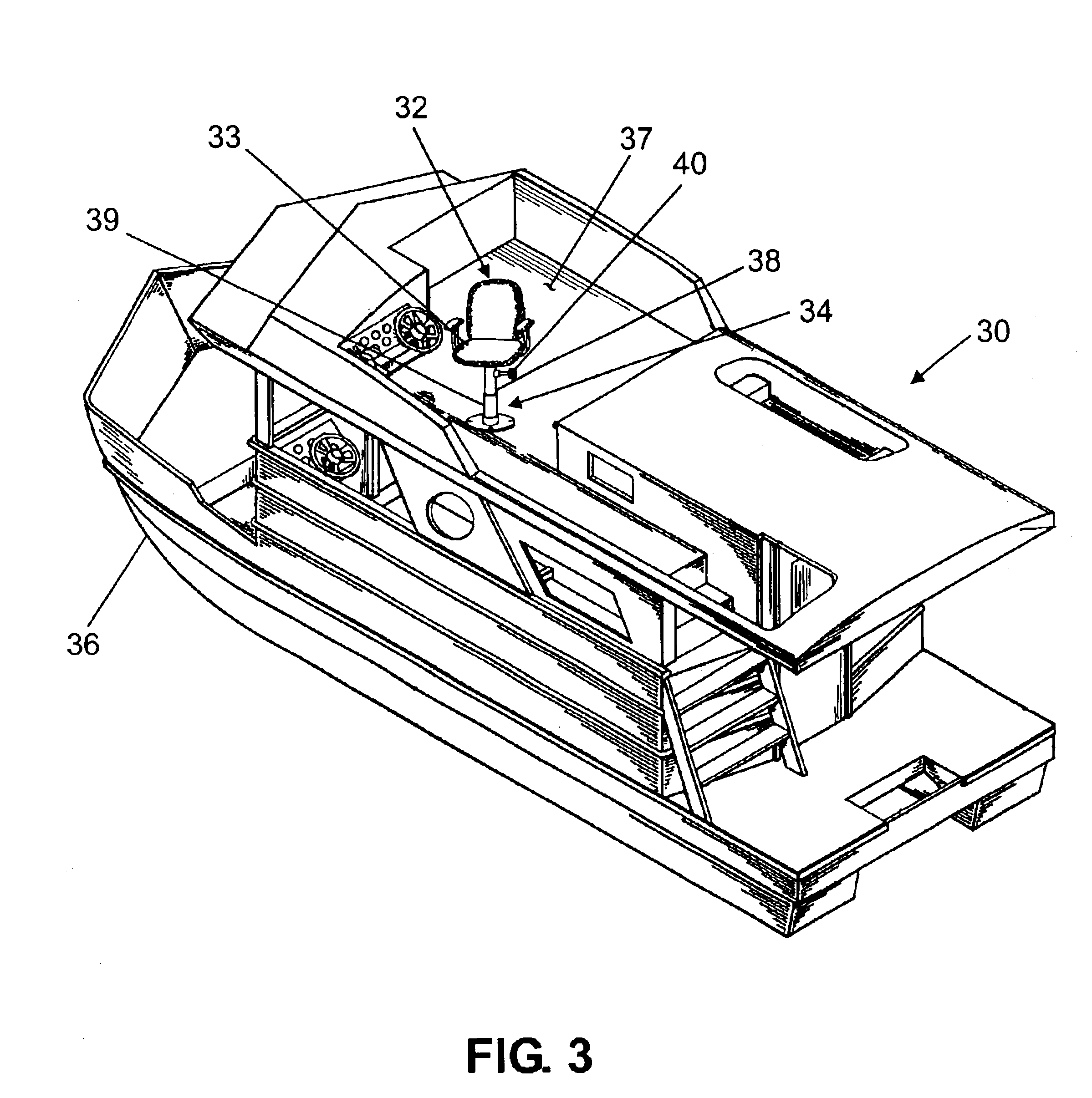Active seat suspension for watercraft
a technology for active seat suspension and watercraft, which is applied in the direction of shock absorbers, special purpose vessels, vessel construction, etc., can solve the problems of increasing the fatigue of riders, affecting the stability of watercraft, and affecting the rider's comfor
- Summary
- Abstract
- Description
- Claims
- Application Information
AI Technical Summary
Benefits of technology
Problems solved by technology
Method used
Image
Examples
Embodiment Construction
[0041]Referring now to the drawings wherein the showings are for the purpose of illustrating preferred and alternative embodiments of the invention only and not for the purpose of limiting the same, there is shown in FIG. 1 a depiction of a personal watercraft 10. Personal watercraft is used herein in accordance with its customary meaning, namely, a vessel using an inboard motor powering a jet pump as its primary source of motor power and which is designed to be operated by a person sitting or kneeling on the vessel rather than the conventional manner of sitting or standing inside the vessel.
[0042]In the embodiment of the invention disclosed in FIG. 1, personal watercraft 10 has a hull 12 usually made of fibreglass and a seat 13 shown as an elongated streamlined body. In this embodiment, seat 13 is pivotally mounted to hull 12 substantially at the front end of seat 13 by means of a pivot pin 14. This pivot arrangement mounts seat 13 to hull 12 in a cantilever fashion to permit up an...
PUM
 Login to View More
Login to View More Abstract
Description
Claims
Application Information
 Login to View More
Login to View More - R&D
- Intellectual Property
- Life Sciences
- Materials
- Tech Scout
- Unparalleled Data Quality
- Higher Quality Content
- 60% Fewer Hallucinations
Browse by: Latest US Patents, China's latest patents, Technical Efficacy Thesaurus, Application Domain, Technology Topic, Popular Technical Reports.
© 2025 PatSnap. All rights reserved.Legal|Privacy policy|Modern Slavery Act Transparency Statement|Sitemap|About US| Contact US: help@patsnap.com



